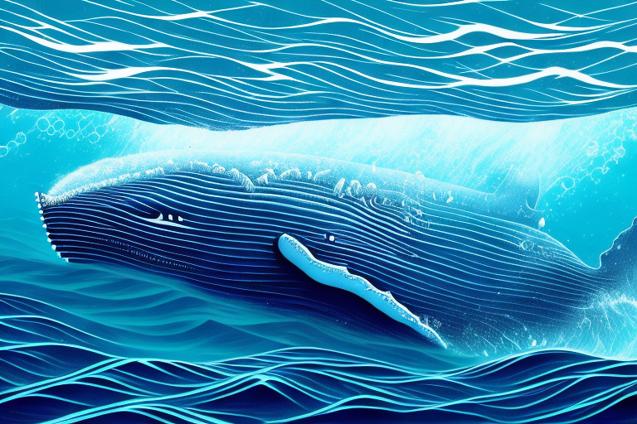
Discover the impact of noise pollution on marine mammals and how sailors can reduce their impact on these incredible creatures.
The Impact of Noise Pollution on Marine Mammals
As we embark on our sailing adventures, it’s essential to be aware of the impact our actions have on the environment, particularly on marine life. One often overlooked aspect of our presence on the ocean is the noise pollution generated by our boats and other human activities. In this article, we will explore the effects of noise pollution on marine mammals, the sources of this pollution, and what we can do to minimize our impact on these incredible creatures.
Understanding Noise Pollution in the Ocean
Noise pollution refers to the excessive and harmful levels of noise in the environment. In the ocean, noise pollution can come from various sources, both natural and human-made. Natural sources of noise include waves, wind, and underwater earthquakes. However, human activities have significantly increased the levels of noise pollution in the ocean, posing a threat to marine life, particularly marine mammals.
Sources of Human-Generated Noise Pollution
There are several human activities that contribute to noise pollution in the ocean. Some of the most common sources include:
-
Shipping and boat traffic: The noise generated by boat engines, propellers, and hulls can travel long distances underwater, affecting marine mammals in the vicinity. Large commercial ships, in particular, produce low-frequency sounds that can travel thousands of kilometers.
-
Oil and gas exploration: Seismic surveys used to locate oil and gas deposits beneath the ocean floor involve the use of airguns, which produce loud, repetitive sounds. These surveys can last for weeks or even months, creating a constant source of noise pollution.
-
Military activities: Sonar systems used by naval vessels emit powerful sounds that can travel vast distances underwater. These sounds can be harmful to marine mammals, particularly those that rely on echolocation, such as whales and dolphins.
-
Construction and dredging: Underwater construction projects, such as the installation of pipelines or wind turbines, can generate significant noise pollution. Dredging, which involves the removal of sediment from the ocean floor, can also create loud, continuous noise.
-
Recreational activities: Personal watercraft, such as jet skis and speedboats, can produce high levels of noise pollution, particularly in coastal areas where marine mammals may be present.
Effects of Noise Pollution on Marine Mammals
Marine mammals, such as whales, dolphins, and seals, rely heavily on sound for communication, navigation, and foraging. Noise pollution can interfere with these essential activities, leading to a range of negative impacts on their health and well-being.
Disruption of Communication
Many marine mammals use vocalizations to communicate with one another, whether it’s to maintain social bonds, coordinate group activities, or attract mates. Noise pollution can mask these vocalizations, making it difficult for marine mammals to communicate effectively. This can lead to social isolation, reduced reproductive success, and increased vulnerability to predators.
Interference with Echolocation
Whales and dolphins use echolocation to navigate and locate prey. They emit a series of clicks and listen for the echoes to determine the distance, size, and shape of objects in their environment. Noise pollution can interfere with this process, making it difficult for these animals to find food and navigate their surroundings. This can lead to malnutrition, disorientation, and even strandings.
Stress and Behavioral Changes
Exposure to noise pollution can cause stress in marine mammals, leading to changes in their behavior. For example, they may spend more time at the surface, where noise levels are lower, or alter their migration routes to avoid noisy areas. These behavioral changes can increase their risk of ship strikes, entanglement in fishing gear, and predation.
Hearing Loss and Physical Injury
Prolonged exposure to high levels of noise pollution can cause temporary or permanent hearing loss in marine mammals. This can have severe consequences for their ability to communicate, navigate, and locate prey. In extreme cases, exposure to intense noise, such as that produced by military sonar, can cause physical injury or even death.
What Can We Do to Reduce Noise Pollution?
As sailors and ocean enthusiasts, it’s crucial that we take steps to minimize our impact on marine mammals and the environment as a whole. Here are some actions we can take to reduce noise pollution:
-
Choose quieter boats and engines: Opt for boats with quieter engines and propellers, and ensure that your engine is well-maintained to minimize noise emissions.
-
Slow down: Reducing your speed can significantly decrease the noise generated by your boat. This is particularly important in areas where marine mammals are known to be present.
-
Avoid sensitive areas: Stay informed about the locations of marine mammal habitats, migration routes, and feeding grounds, and avoid these areas whenever possible.
-
Support regulations and policies: Advocate for the implementation of noise reduction measures in the shipping industry, such as the use of quieter ship designs and the establishment of speed limits in sensitive areas.
-
Raise awareness: Share information about the impacts of noise pollution on marine mammals with fellow sailors, friends, and family members, and encourage them to take action as well.
Conclusion
Noise pollution is a significant threat to the health and well-being of marine mammals, and as sailors, we have a responsibility to minimize our impact on these incredible creatures. By taking steps to reduce our noise emissions and supporting policies that promote quieter oceans, we can help protect marine mammals and preserve the beauty and diversity of our ocean ecosystems for generations to come.